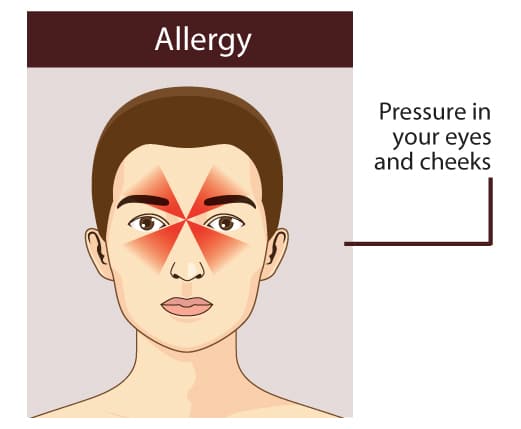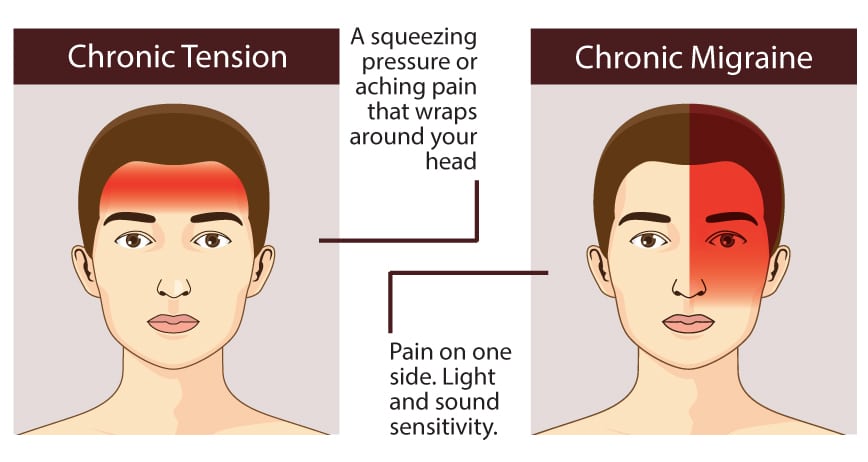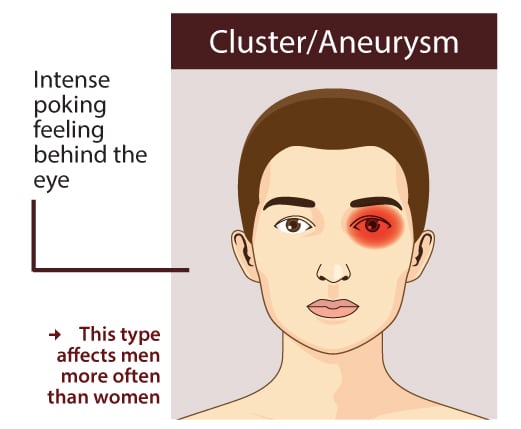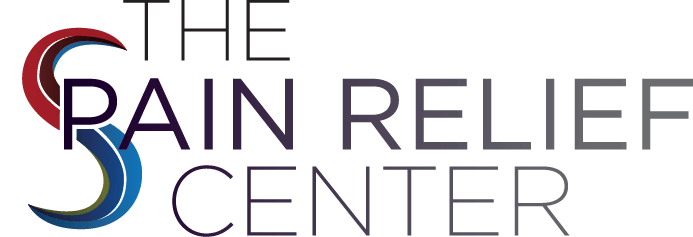HEADACHE LOCATION CHART
Home » Common Questions » Headaches and Migraines » Headache Location Chart
MIGRAINE TREATMENT OPTIONS
Headache Areas
A headache can be defined as having pain in any part of our head. We can experience them on one or both sides of our head, the back of our head, the front of our head or maybe it feels like our headache is all over. It can be throbbing, pounding, a dull ache or our head will feel like it’s in a vise grip.
One thing is for sure, our headache has gotten our undivided attention and we want relief. Below is information on some of the different types of headaches, where they are located, symptoms and treatment options.
Types of Headaches Chart
Does the Headache Location Mean Anything?
Yes, the location of a headache will tell us what type of headache it is. When we know what kind of headache it is, we can determine its root cause. It’s always important to know the root cause of a headache so we can tailor a treatment plan.
We may feel headaches in the front of our head, on one side, both sides, or in the back of our heads.
For instance, if your headaches occur mostly around your eyes, across your cheeks and the bridge of your nose, it is probably a sinus headache. Sinus headache pain can also occur in the forehead or around the top teeth. When you have a sinus headache, it may mean you have an upper respiratory infection or some other allergy. We may treat that headache with allergy medicine, or your treatment may be as simple as avoiding foods that trigger the headache.
Tension headaches feel like a tight band around the forehead. They may develop if you overuse headache medications. There may also be inflammation in the area. We may treat this type of headache with NSAIDs, antidepressants, or even Botox injections.
When Should You Be Concerned About A Headache?
Nearly everyone has headache pain occasionally. But most headaches are not symptoms of serious medical conditions.
However, there are times when headache pain may be a sign of something else. Here are a few signs and symptoms that will help you know when to worry about a headache:
You should be concerned about your headache if you also have:
- Sudden, very intense headache pain (a thunderclap headache)
- Severe or sharp headache pain that is not usual for you
- A stiff neck and fever
- A fever higher than 102 to 104 degrees Fahrenheit
- A nosebleed
- Fainting
- Dizziness or loss of balance
- Seizures
- Night sweats
- Swelling
- An animal bite
If you experience any of these, you should seek immediate medical attention. These are all signs of deeper, more serious medical issues. When headaches happen in conjunction with other symptoms, they are almost certainly signs of a deeper issue.
For instance, if you experience a headache after a fall or blow to the head, you may have a concussion.
What Do Different Types of Headaches Mean?
Not all headaches are created equal. Different types of headaches occur in different places and have different causes.
The most common types of headaches are tension headaches, migraine headaches, and cluster headaches.
Tension migraines might feel like a band tightening around your forehead. When you have a tension headache, it usually means the muscles in your neck or scalp are tight or irritated.
Migraine headaches are moderate to severe headaches that can occur amidst many other symptoms. Doctors are not entirely sure what causes migraine headaches, but they can help you avoid them. Many people achieve relief from their migraines by avoiding trigger foods.
Cluster headaches are the rarest of the primary headaches. This type of headache may occur in or around one eye, or on one side of the head. Headaches will likely happen close together for a few days, and then maybe not at all for several months.
Like migraine headaches, doctors are unsure about the cause of cluster headaches. But the cycle of a cluster headache indicates that the body’s biological clock has a role to play in cluster headaches. Fortunately, these types of headaches are not life-threatening.
What is the Cause of Headaches at the Back of the Head?
Pain in the back of your head could have multiple causes.
The most common headache that occurs in the back of the head is a tension headache. The cause of a tension headache is usually tightness in the muscles of your scalp or neck. You can treat this type of headache with over-the-counter pain relievers.
A headache in the back of your head could also result from poor posture. If you slouch, you could be putting a lot of pressure on the muscles in your back, neck, and jaw. You could also be straining the nerves in that area. If you notice yourself slouching, try and stand up a little straighter. It might give you some headache relief.
You could also have arthritis in some of your upper vertebrae. This type of headache pain would get worse when you move. If you have arthritis headaches, you should talk to your doctor about treatments.
Occipital neuralgia is a rare type of headache where there is a pain in your occipital nerves. These are nerves that run from your spinal cord up to your scalp.
When your occipital nerves sustain an injury or become inflamed, you might feel pain in the back of your head or behind your ears. Treatment usually includes warm compresses and massages.
Headache Location Chart: Allergy Headache
When we are suffering from an allergy headache, the headache location for our pain is in our faces due to our sinuses being affected.
Throbbing with pain on one side of our face is usually experienced. According to the headache location chart, it is best that we avoid sunlight because this only aggravates our headache. Since an allergy headache is associated with things we are allergic to, there are triggers we need to watch out for:

Common triggers for allergy headaches are:
- Nasal or sinus congestion
- Certain foods
- Stress
- Smoke
At home allergy treatment options:
- Apply a warm moist washcloth to our face multiple times a day.
- Drinking plenty of fluids will help to thin our mucus.
- If possible, inhale steam 2-4 times daily.
- Spray nostrils with a saline solution.
- Flush the sinuses using a neti-pot or other flushing system.
Before seeing our family doctor and/or an allergist, we may want to try a few over-the-counter allergy medications such as antihistamines, decongestants, and corticosteroids.
Your doctor or allergist may prescribe one of the following:
- Leukotriene inhibitors – This is an oral medication which will relieve our allergy signs and symptoms.
- Injections – Allergy shops usually are administered 1-2 times a week for a period of 3-6 months. After this, maintenance shots are given less frequently for a period of 3-5 years.
- EpiPen – If you have an allergy to foods such as peanuts or bee or wasp venom, then it is wise to carry at least 2 EpiPens with you when you are out in case of anaphylactic shock.
Headache Location Chart: Chronic Daily Migraine
A chronic daily headache occurs very frequently usually 15 days out of the month for at least six months or more. Because this type of headache includes a variety of different headaches, the headache location is going to vary.

Chronic Headache Symptoms Include:
- Chronic migraine
- Chronic tension-type headache
- Persistent headache on a daily basis
One of the most common causes of a chronic daily headache is overuse of headache medications.
Causes of Chronic Headaches Include:
- Inflammation or other problems with blood vessels around the brain area.
- Infections
- Brain tumor
- Traumatic brain injury
Our doctor may order an MRI or a CT scan in addition to getting our medical and family history regarding a headache. If the problem is taking too much headache medication and taking it too often, we may need to slowly end our dependency before starting a treatment plan.
Medications our doctor may prescribe to treat our chronic daily headache:
- Antidepressants — These medications can also help treat the depression, anxiety and sleep disturbances that often accompany a chronic daily headache.
- Beta-blockers — These drugs are commonly used to treat high blood pressure. They can also be used to help prevent episodic migraines.
- Anti-seizure medications — Some of these medications are used to help prevent migraines as well as a chronic daily headache.
- NSAIDs — Prescription nonsteroidal anti-inflammatory drugs can be helpful especially if you are trying to withdrawal from other pain medication.
- Botulinum toxin — Botox injections would most likely be considered if the headache has features of chronic migraines.
Headache Location Chart: An Aneurysm
According to the cluster headache Complete Headache Chart, an aneurysm can feel like a migraine or cluster headache. An aneurysm headache is dangerous because they can lead to a stroke. They can also cause us to slip into unconsciousness if there is a slow, steady leak of blood in our brain. Other symptoms we may experience are the double vision and a rigid neck. The headache location for our aneurysm is having severe pain behind or above one or both of our eyes.

Symptoms of an un-ruptured aneurysm include:
- Loss of vision or double vision
- Numbness or weakness on one side of our face
- Difficulty speaking
- Loss of balance
Symptoms of a ruptured aneurysm include:
- Nausea and vomiting
- Sensitivity to light
- Seizures
- Drooping eyelid
Treating our aneurysm requires a medical diagnosis which will consist of tests to determine if we have bleeding in the space between our brain and the tissues around our brain.
Diagnostic tests for aneurysms include:
- Computerized Tomography (CT) Scan
- Cerebrospinal Fluid Test
- Magnetic Resonance Imaging (MRI)
- Cerebral Angiogram
Treatment for our aneurysm will depend on whether it is ruptured or un-ruptured. Let’s first look at treatments for ruptured aneurysms.
Methods to close off an un-ruptured brain aneurysm:
- Surgical clipping stops the bleeding blood vessel(s).
- Endovascular coiling is a procedure which involves a plastic tube being inserted into an artery in the groin area and going through the body to the aneurysm.
- Flow diverters which are stint like tubular implants which divert the blood flow away from our aneurysm sac.
- Treating our un-ruptured brain aneurysms can involve surgical clipping, endovascular coiling or a flow diverter.
Headache Location Help in Plano, Texas
A headache is no fun. When we get one, we want relief and we want it fast. Some are more easily treated than others.
If your headache is a problem for you, be sure to get checked out by your doctor as soon as possible. The Pain Relief Center and its five specialized institutes are dedicated to meeting any and all of a patient’s needs. We have an institute designed specifically with patients who suffer with chronic headaches and migraines. At our pain management clinic Dallas TX location, Dr. Rodriguez, and his staff are devoted to offering cutting-edge treatments and moving beyond traditional pain management regimens that fail to free you from your pain. Schedule a consultation today!
TAKE ACTION
The most critical step on the path to recovery is finding a pain management doctor who can address your pain management needs successfully. The Pain Relief Center and its five specialized institutes are dedicated to meeting any and all of a patient’s needs. Located in the Dallas-Fort Worth area, Dr. Rodriguez and his friendly staff will help you along the path to recovery.
Our new center in Dallas is part of a nationwide development by Pain Relief Centers, geared to providing individualized and comprehensive healing and pain management services with unprecedented levels of compassion, care, and comfort for each patient.

